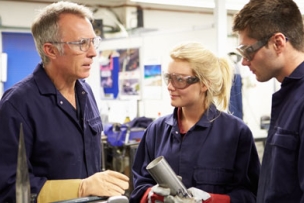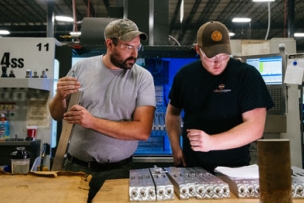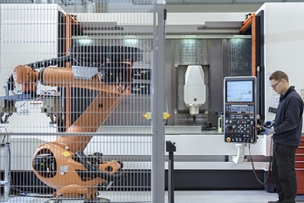America’s Cutting Edge (ACE) is a national initiative to restore the prominence of the U.S. machine tools sector through advances in training and technology. Part of the ACE effort is a new program that uses virtual training and machining simulation to teach essential manufacturing skills. Here’s an overview of the program, which is designed to help tackle the nation’s skills gap and recover its technical and manufacturing leadership position.
How can we solve the skills gap? It’s a challenge that has plagued the manufacturing sector for years and will no doubt have an impact on most machine shops.
A 2018 study by Deloitte and the Manufacturing Institute predicted that by 2028 there would be 2.4 million unfilled jobs in the manufacturing industry due to such factors as shifting skill sets, the introduction of advanced technologies and an aging workforce.
The problem is caused by several factors, including a lack of training in high schools and colleges and a general perception that manufacturing—and machining, in particular—is an outdated profession that’s not a viable career choice for students looking for innovative, high-tech work.
Tony Schmitz, an engineering professor at the University of Tennessee, Knoxville, and a joint faculty member at Oak Ridge National Laboratory (ORNL), is on a mission to change this perception and close the machine tools skills gap.
He created America’s Cutting Edge (ACE), a CNC machining training program, in collaboration with the Institute for Advanced Composites Manufacturing Innovation (IACMI) and ORNL. ACE is supported by the U.S. Department of Defense Industrial Base Analysis and Sustainment (IBAS) program.
In this interview, Schmitz discusses the program and its objectives and the overall outlook for U.S. manufacturers.
Read more: Tackling the Manufacturing Skills Gap: 5 Skills Your Company Will Need Soon
Q: Tell us about the new training program. How did it come about?
Schmitz: The ACE program is a national initiative for machine tool technology development and advancement. As part of the program, we are offering an online component that teaches CNC machining training, which is then followed by a one-week, in-person training opportunity.
At Oak Ridge National Laboratory, as we were planning activities over a five-year time horizon, we understood that it was going to be necessary to provide training for the next generation of the machine tool workforce, which is not just those folks who will be operating the machine tools but also the folks to design the machine tools, the entrepreneurs who own the job shops, and the mechanical designers and engineers who design the parts and need to understand the manufacturing processes. So we realized we needed to develop a training program that is widely accessible.
We also recognized that, independent of what your career trajectory is going to be, if you’re going to develop some expertise in machining, you’ll also need to be performing operations at the machine tool. That means you’ll need in-person training, so there’s a companion part of the program that is in person and will be organized at different locations. For this portion of the pilot program we are limiting the participation numbers to 10 at each site. Our vision as the ACE program grows is to use regional locations and expand our in-person machine tool training. Of course, the online training content is available everywhere.
Because manufacturers are concerned about the cost of operations, the final training module features machining cost, including tool wear, vibration considerations and the operating parameters that let you see how you could optimize this process taking all those things into account.





Talk to Us!
What is the time commitment and cost of the program. Is the course I-pad compatible or do I need to use a computer (laptop or desk top) to complete the program.
Thanks,
Bob Barber
168Hi
156Hi Bob, The ACE CNC machining training program has no cost associated with it and it's 6 hours of 4 courses. I believe that you could use an iPad to complete the course, but that is a specific question the folks running the program can help with. Here is the link to the site to explore further: https://mtrc.utk.edu/ace/.
This is a great training opportunity and we hope you can take advantage of it. If you do, let us know how it goes!
166metal working
170What will these classes cost us?
161Hi Michael, That's a common question we've been getting. Good news, the ACE CNC machining training program has no cost associated with it.
163i was working for purple rain as an cnc operator for 8 years,
im looking for a job
153as a thirty year career machinist i find it amusing that these types of "schooling" programs continue to exist and pump out extremely mediocre results at best. this trade requires hands on learning over years ,even decades,to be competent never mind good. and repeatedly saying that a "lack of talent" is even more amusing, how about a lack of common sense. where you used to have an owner a secretary a foreman and a quality guy you now have 3 engineers four iso paperwork guys and 5 or six people in h.r. that dont produce anything for every one that does produce actual sellable parts,thats the problem with american manufacturing. and how are you going to sell a career to a kid in high school? well,johny if you work real hard and are able to rise to the top of your trade you will be able to barely scrape by on your hourly wage? a nice upper lower class living? give me a break.
144Leave a reply
Your email address will not be published. Required fields are marked *